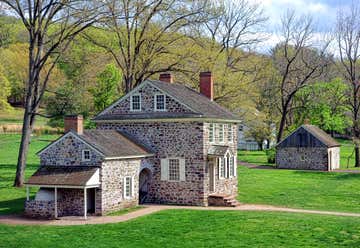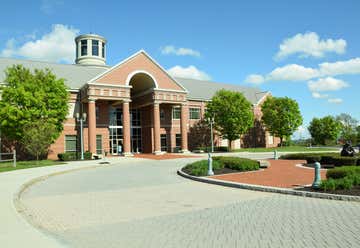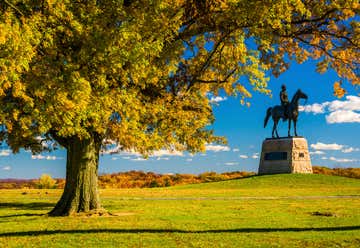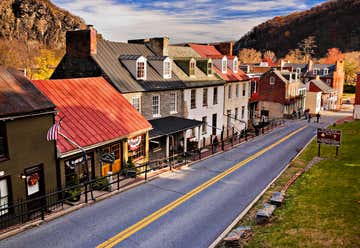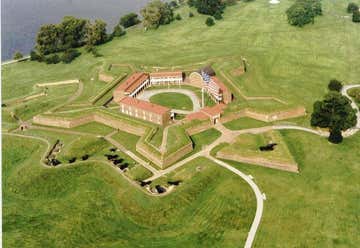The East Coast is a treasure trove of American History. There is so much that took place in just a few states (including the foundation of Sheetz in 1952) that it's hard to experience it all. However, we feel these seven spots—spanning from the City of Brotherly Love to right across the Potomac River in Virginia—really capture the independent, prosperous spirit (much like you, Master & Commander) of our great nation. Even if history isn't your thing, we still think you'll be awed by some of the stories that unfolded here.
Why is a giant bell with a major crack considered one of the most iconic symbols of U.S. independence? You’ll have to travel to Independence Hall in Philadelphia to learn more and to see this grand old bell in person. Take a “bell-fie” photo with the Liberty Bell and walk in the steps of history! What was once a simple bell hanging in the Pennsylvania State House was there at both the signing of the Declaration of Independence and the Constitution, leading to its place in U.S. history. Though no one alive today has heard this bell ring, it has remained an enduring symbol of freedom.
If things had gone differently at Valley Forge in the winter of 1777, people on this side of the pond might be waving the Union Jack instead of the Stars and Stripes. During the Revolutionary War, George Washington and his troops left Philadelphia (which was occupied by the British) and set up camp at Valley Forge. The weather was freezing cold, there was little food or supplies, and the troops were exhausted after recent losses. Luckily, the troops emerged with renewed cohesion and morale, marking a turning point in the war. Today, Valley Forge is a 3,500-acre park full of meadows, woodlands, and monuments to the Revolutionary War heroes. You can learn about the history at the visitors center and take a tour of the encampment.
Pennsylvania is a dream come true for history buffs because both the Revolutionary War and the Civil War happened here. The National Civil War Museum in Harrisburg tells the story of the war and the time periods directly before and after. The museum houses a collection of over 24,000 artifacts, photos, and documents. Some of the most interesting items include a lock of Abraham Lincoln’s hair (not kidding), lead bullets with embedded teeth marks from the soldiers who bit them while enduring surgery, Robert E. Lee’s personal Bible, authentic battle maps, weapons, and more.
The rolling meadows and wooded hills around Gettysburg, Pennsylvania, make for a very peaceful drive, but this was not the case in November of 1863 when the bloodiest battle of the Civil War took place here. General Robert E. Lee had invaded the North, and this is where Union troops turned him back and changed the tide of the war. Visitors can now take guided tours of the battlefield and visit the national cemetery, which was consecrated by Abraham Lincoln with the Gettysburg Address. For those less interested in history, the park has programs about the plants, animals, and natural features of the surrounding ecosystems.
One idealistic man with an agenda, one grand plan, and one single night provided a powerful ember for the Civil War. In 1859, abolitionist John Brown and a group of 22 men stormed the Harpers Ferry armory, hoping to arm slaves and lead them in a fight for their freedom. Unfortunately, he was captured and several lives were lost before he could help any slaves win their freedom. Today, the large Harpers Ferry National Historical Park includes land in the states of West Virginia, Maryland, and Virginia. The area was of strategic importance during the Civil War and changed hands between the Union and Confederacy eight times. You can tour buildings, interact with costumed interpreters, and learn about the region’s pivotal role in history.
Every American has heard the “Star-Spangled Banner.” However, few have actually seen the spot where Francis Scott Key was inspired to write a poem about the brutal bombardment by the British Navy during the War of 1812. This poem was later set to music and became the famous song. Thanks to the National Parks Service, you can visit Fort McHenry and learn about the patriots who defended the star-shaped fort during the Battle of Baltimore, keeping the broad stripes and bright stars streaming above the battlements as described in the national anthem.
Arlington is hallowed ground. This national cemetery was established during the Civil War on property that once belonged to Robert E. Lee. It is the final resting place of soldiers from many wars and is managed by the Department of Defense. Visitors to the cemetery can pay their respects at the Tomb of the Unknown Soldier, the Space Shuttle Challenger Memorial, and the graves of several United States presidents—including John F. Kennedy’s, which is marked by an eternal flame. Prepare yourself for an impactful experience in this beautiful, solemn setting.
Banner Photo Credit: Shutterstock


